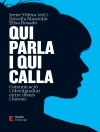This book argues that educators and the general public have become complacent about girls’ education as a consequence of the more recent fuss about problems for boys. After an analysis of persistent disquiet about girls’ lifestyles, it uses theories of gender and education to demonstrate that girls are being produced in contradictory ways in current schooling. Many girls develop a sense of themselves through close connection with friendship groups but schooling processes typically require them to adopt the position of competitors in the end-of-school rankings and to act out their individualized positions in imagining themselves into the future. Ultimately the work offers insight and understanding leading to a less divisive educational pathway for girls.
表中的内容
Foreword: Reclaiming the Space for Girls.- Chapter 1. Who Are Girls and Is There a Problem?.- Chapter 2. How We Know What We Know: Knowledge and Evidence.- Chapter 3. See How Far We’ve Come! Girls’ Education in Recent History. And Where Does This Leave Girls Now?.- Chapter 4. The Balance Act.- Chapter 5. Girls at School: The Formation of Learning Identities.- Chapter 6. Post School Pathways and Girls’ Imagined Futures.- Chapter 7. Girls at School: A More Complex Picture.
关于作者
Judith Gill is Adjunct Associate Professor at the University of South Australia and a former secondary schoolteacher who has worked in teacher education for the past 30 years. Her main research interest is in gender and its associations with achievement and working lives.
Kathy Esson has worked widely in the fields of education and health, including her role as Senior Manager at the NSW Skills Board Secretariat, Australia. She has also been involved in a review of public education in NSW, taught psychology, and been a school and university counsellor, working primarily with young women.
Rosalina Yuen is a psychologist in private practice in Australia. As a former social worker, she worked extensively with girls and young women in many settings. She provides counselling services to schools, universities and major employers.












